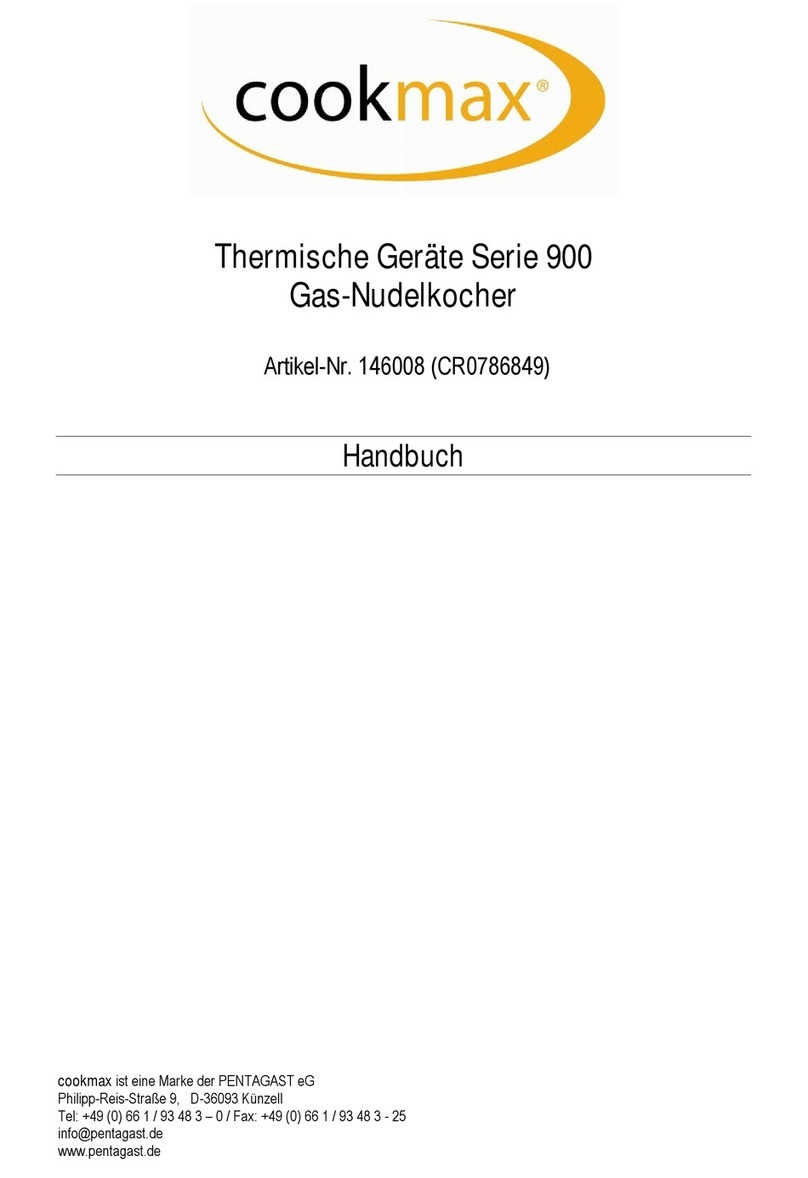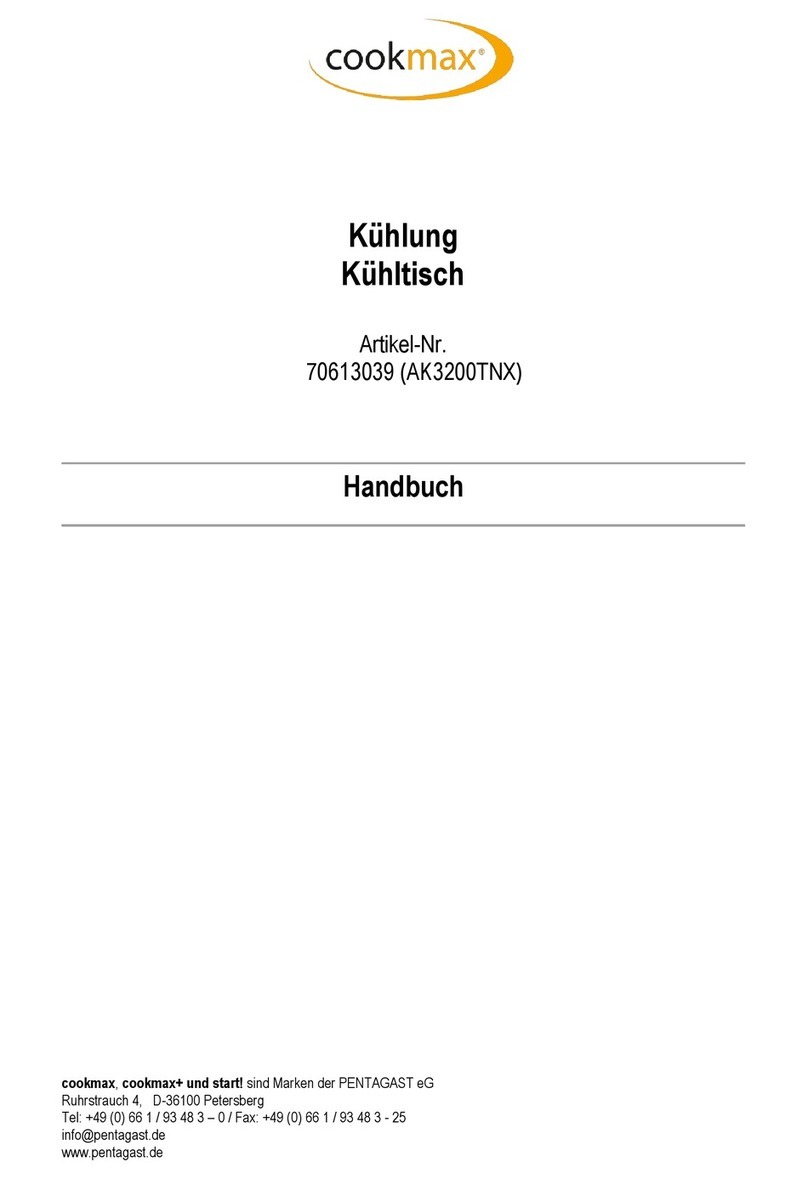
3
3. MOVIMENTAZIONE ED IMMAGAZZINAGGIO
L’apparecchio è contenuto in un imballo costituito da un pianale in legno,
angolari rigidi, protezioni di polistirolo e film plastico. Pesi ed ingombri sono
indicati nella tabella CARATTERISTICHE TECNICHE del capitolo 11. In attesa
della collocazione definitiva immagazzinare in ambiente coperto a temperatura
compresa tra -25°/+55°C ed umidità relativa compresa tra 30/95%.
4. MESSA IN SERVIZIO
Leggere attentamente le etichette sull’apparecchio, non coprirle per nessuna
ragione e sostituirle immediatamente in caso venissero danneggiate. Non
togliere le protezioni o pannellature che richiedono l’uso di utensili per essere
rimosse.
Posizionamento
Assicurarsi che, dal punto di vista degli ingombri (vedi tabella capitolo 11), lo
spazio riservato all’apparecchio ne permetta il corretto utilizzo e la facile
manutenzione. Sistemare l’apparecchio in piano avvitando i piedini livellatori e
registrandoli, dopo avendo disimballato rimuovendo tutte le protezioni
predisposte dall’azienda. Per limitare il rischio di scarica elettrica statica dovuta
alla rimozione della plastica protettiva, si consiglia di rimuovere la plastica
lentamente e in piccoli pezzi. Spostare l’apparecchio sollevandolo solo dal
fondo inferiore esterno, per evitare di danneggiare i piedini di appoggio e gli altri
equipaggiamenti. Se l’apparecchio, durante la movimentazione, è stato
posizionato verticalmente, attendere dure ore prima di procedere
all’accensione dell’apparecchio. L’apparecchio non deve essere installato in
ambienti pericolosi, all’aria aperta o esposto a pioggia, lontano da fonti di calore
(termosifoni, faretti ecc..), al riparo dai raggi solari e da correnti d’aria. L’aria
deve circolare liberamente attraverso l’unità di condensa. Il mancato rispetto
delle condizioni riportati, porta ad una riduzione della prestazione
dell’apparecchio.
Pulizia iniziale
Prima dell’allacciamento alla rete elettrica pulire adeguatamente l’apparecchio.
Per le parti interne usare detersivi antibatterici, per le parti in plastica è
sufficiente utilizzare panni inumiditi. Asciugare con un panno morbido e pulito.
Non usare detersivi aggressivi, abrasivi ne solventi. Posizionamento
componenti ed accessori
Tutti gli accessori sostitutivi delle griglie possono essere messe negli appositi
supporti. Provvedere a sistemare i supporti griglie all’interno della cella nella
posizione più adatta all’uso.
Collegamento alla rete elettrica
Assicurarsi che l’impianto di alimentazione elettrico rispetti le leggi vigenti. Il
cavo di alimentazione deve essere ben steso (evitare arrotolamenti o
sovrapposizioni) in posizione non esposta ad eventuali urti o manomissioni, non
deve essere in prossimità di liquidi od acqua e di fonti di calore. Nel caso si
danneggiasse, farlo sostituire immediatamente da personale qualificato.
Evitare sempre l’uso di adattatori.






























